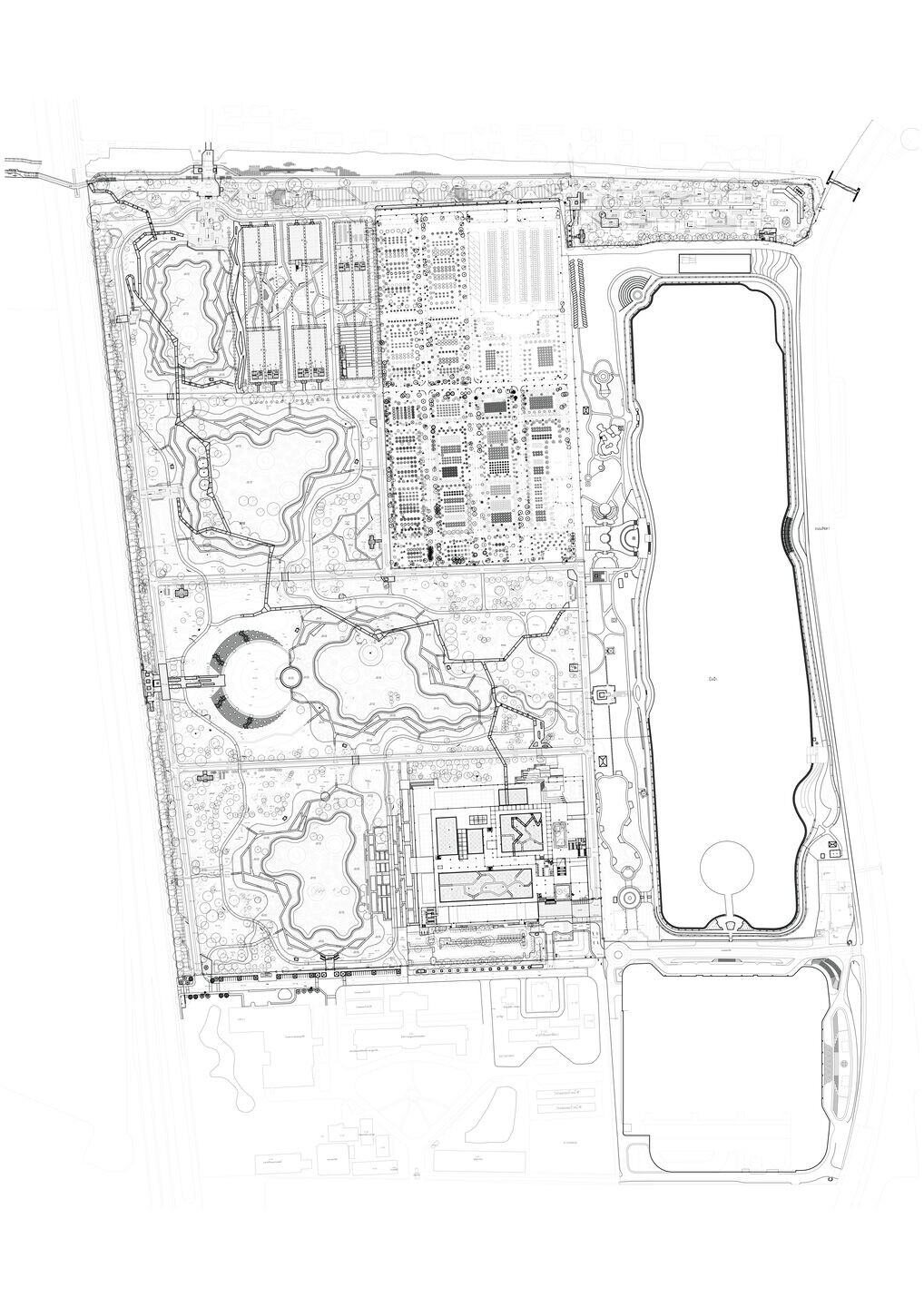Benjakitti Park is an urban park located in the former Tobacco factory area, owned by The Treasury Department, Ministry of Finance. The site covers 720,000 sq.m. After The Tobacco factory was relocated, the site was developed to become an urban park in Bangkok.
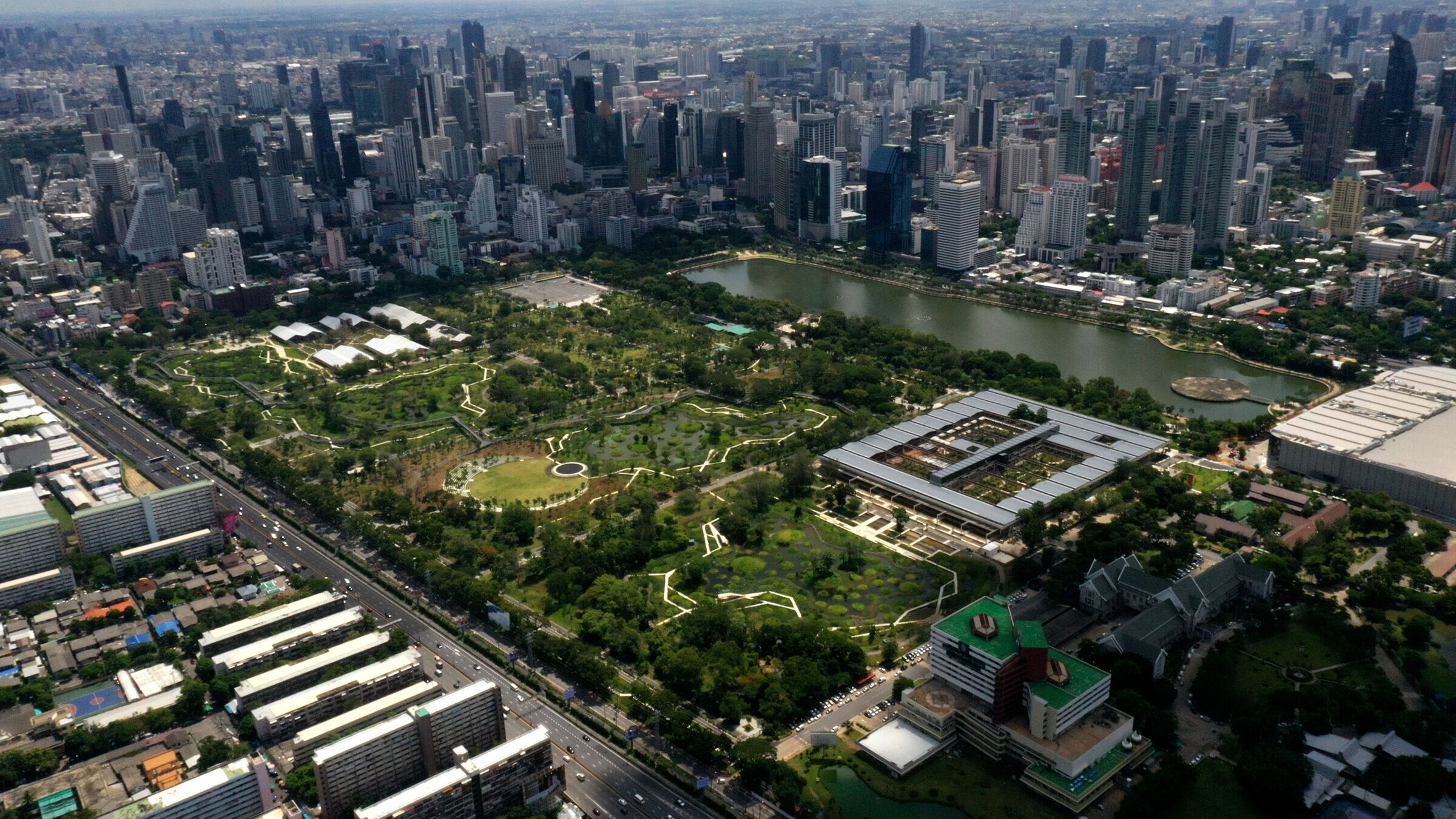
The design concepts are, firstly, to improve public understanding and knowledge about the ecology, forest, hydrology, and environment to the urban community. Secondly, to become ‘Initiative’ of Ecological Park Development. Lastly, to serve the urban communities and preserve the ecological environment of the city retaining the 128,000 cu.m. of water in the rainy season and producing clean water 1,600 cu.m./ day.
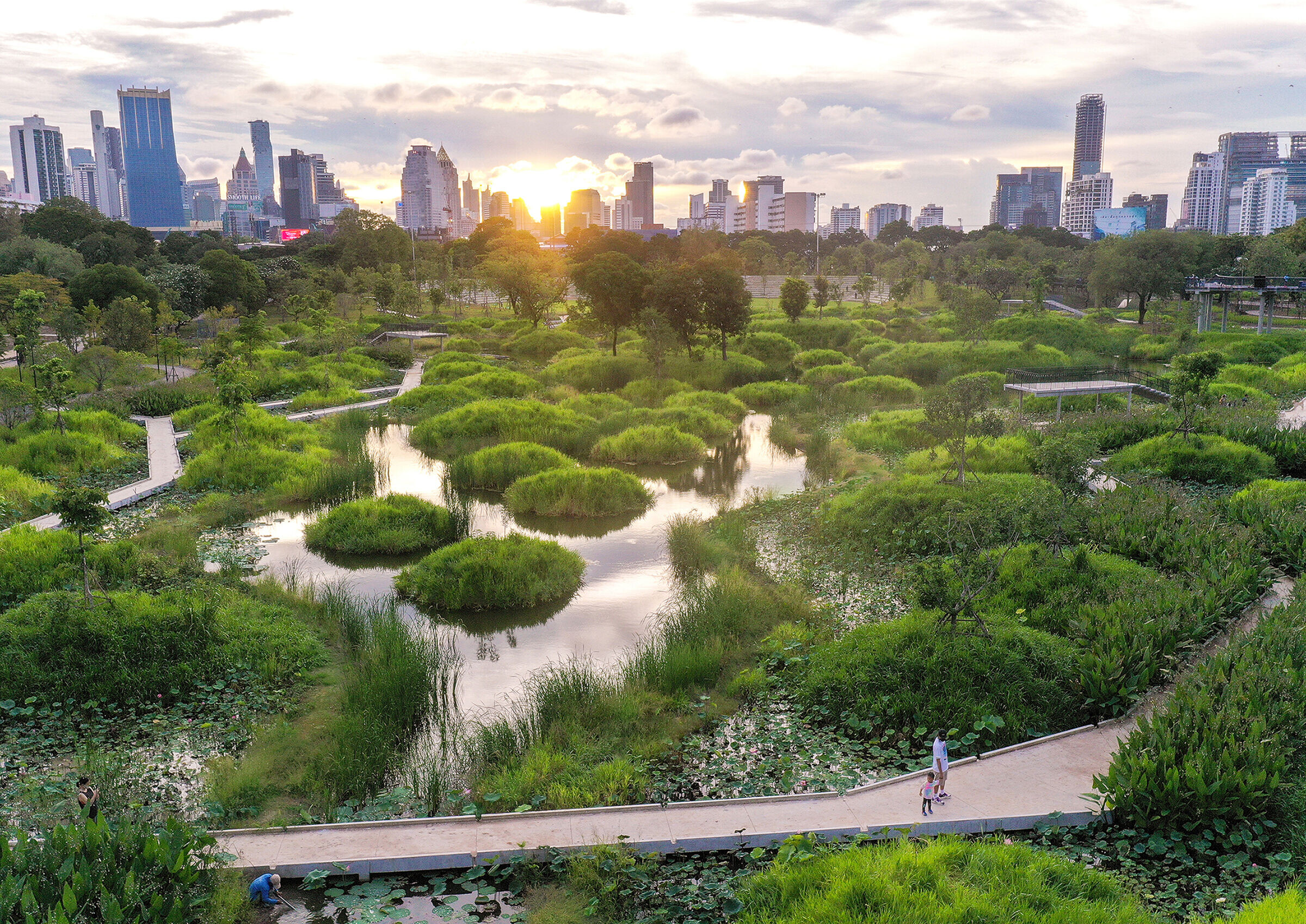
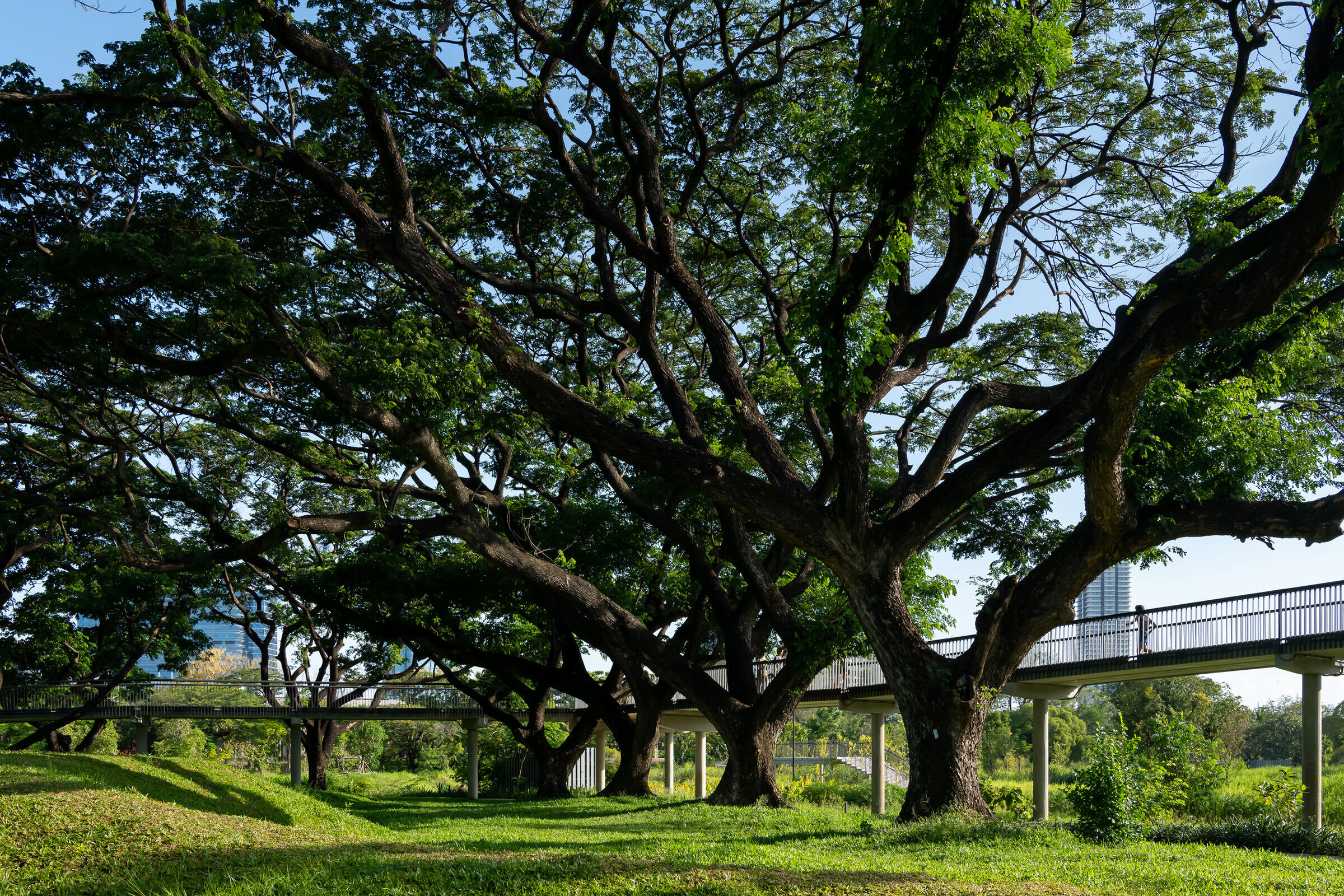
With Thailand’s monsoon climate flood and drought are significant problems. The design acts as a ‘sponge’, large sponge that retains rainwater in the rainy season and discharge water in the dry season with 128,000 cu.m. water capacity. The water from Phai Sing To canal, located next to the site is contaminated with urban runoff and sewage, is purified with bioremediation by using wetland plants, producing 1,600 cu.m. clean water/ day. The site is flat and low-lying, with an average elevation of just 0.5 meters. Most of the area was originally swampland with high groundwater levels. Thai conventional agricultural wisdom method is used to keep the tree roots higher to avoid floods and have raceways to help drain water and irrigation canal.
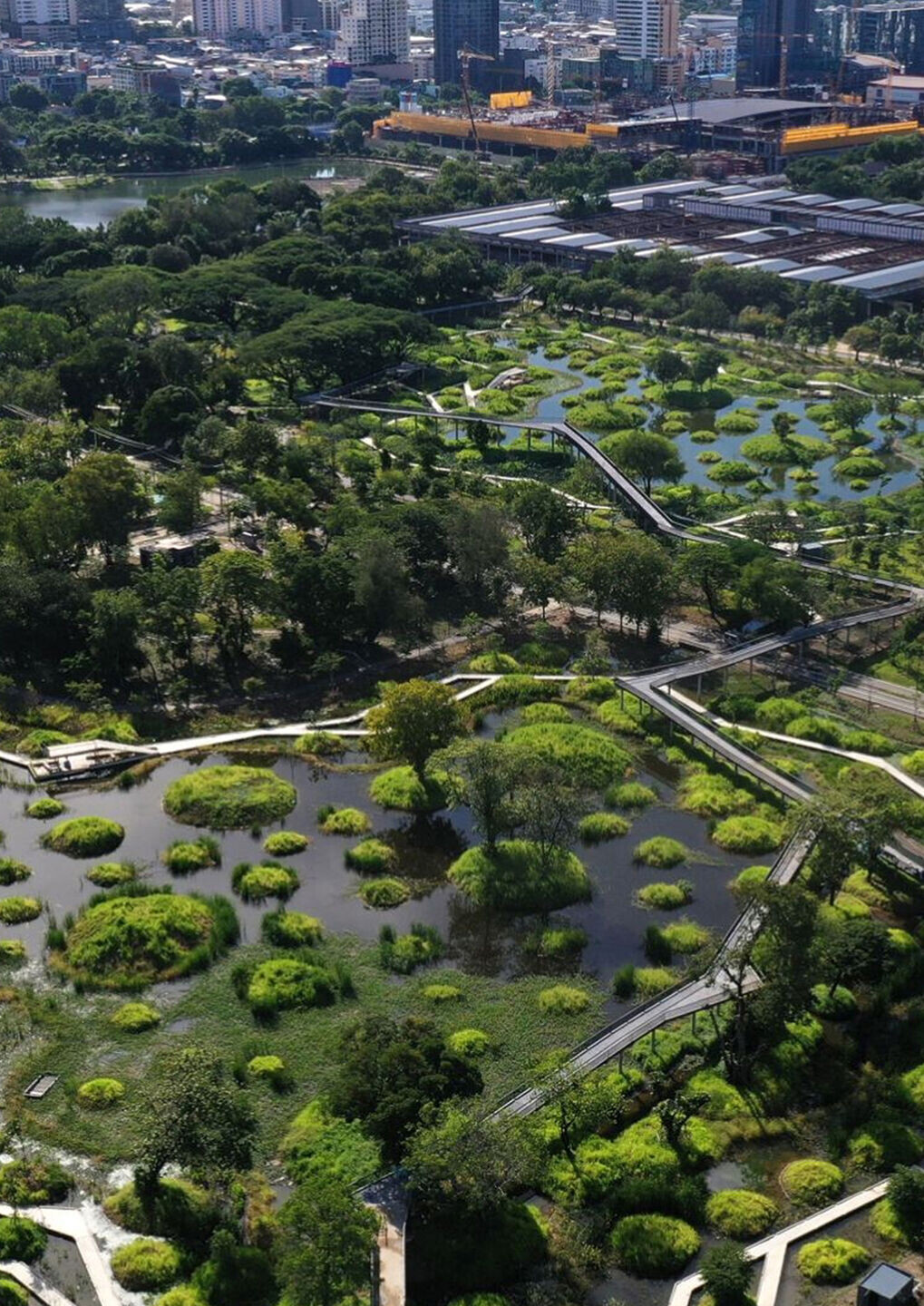
This project transformed hard clay surface soil into wet and spongy habitat, allowing a rich native plant community to establish itself with minimal irrigation. Planted 5600 seedlings of 360 species, which are rare indigenous trees of the central river basin mixed with small to medium sized plants that provide shade to help seedlings grow. All existing trees on site were preserved and integrated into the park design.
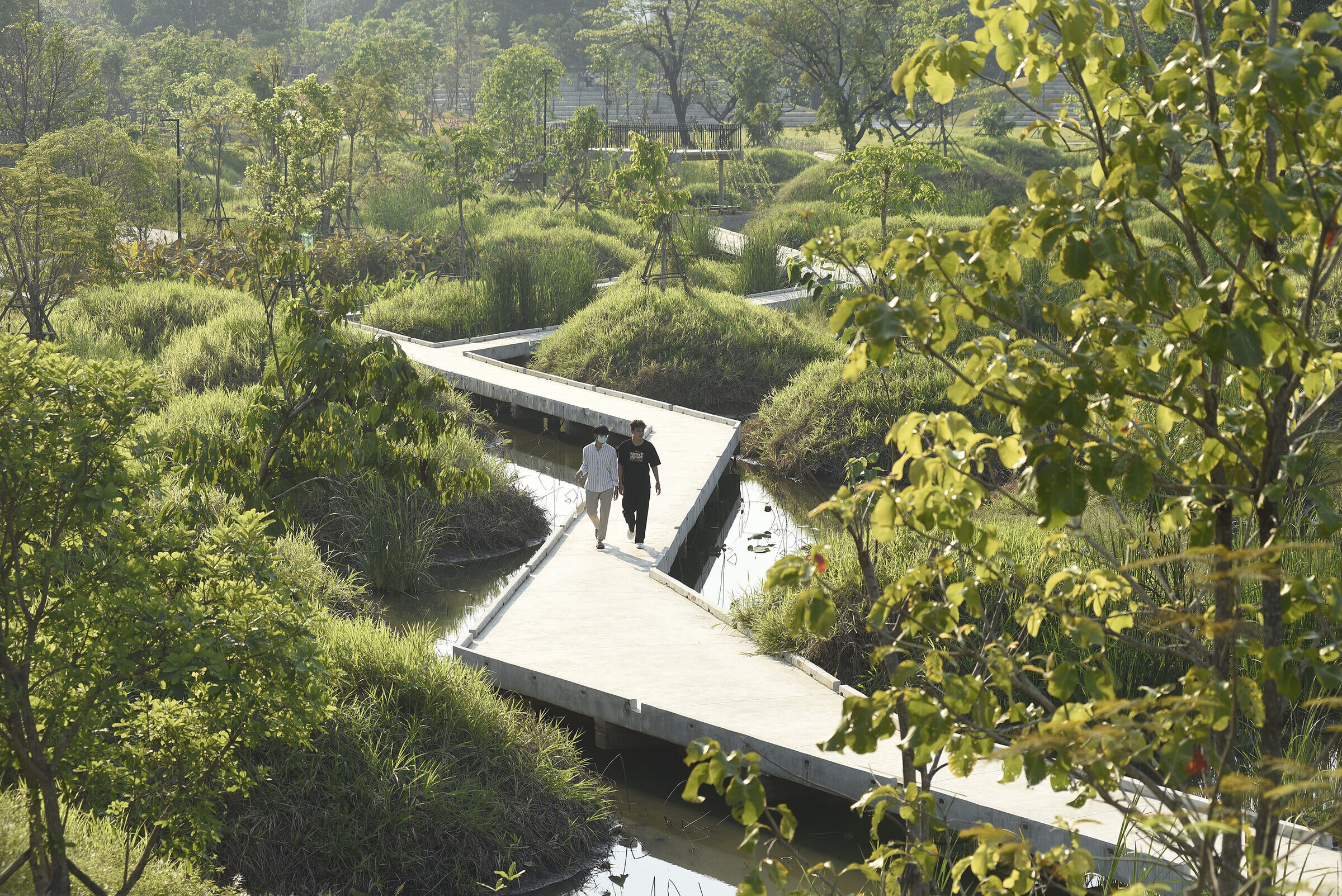
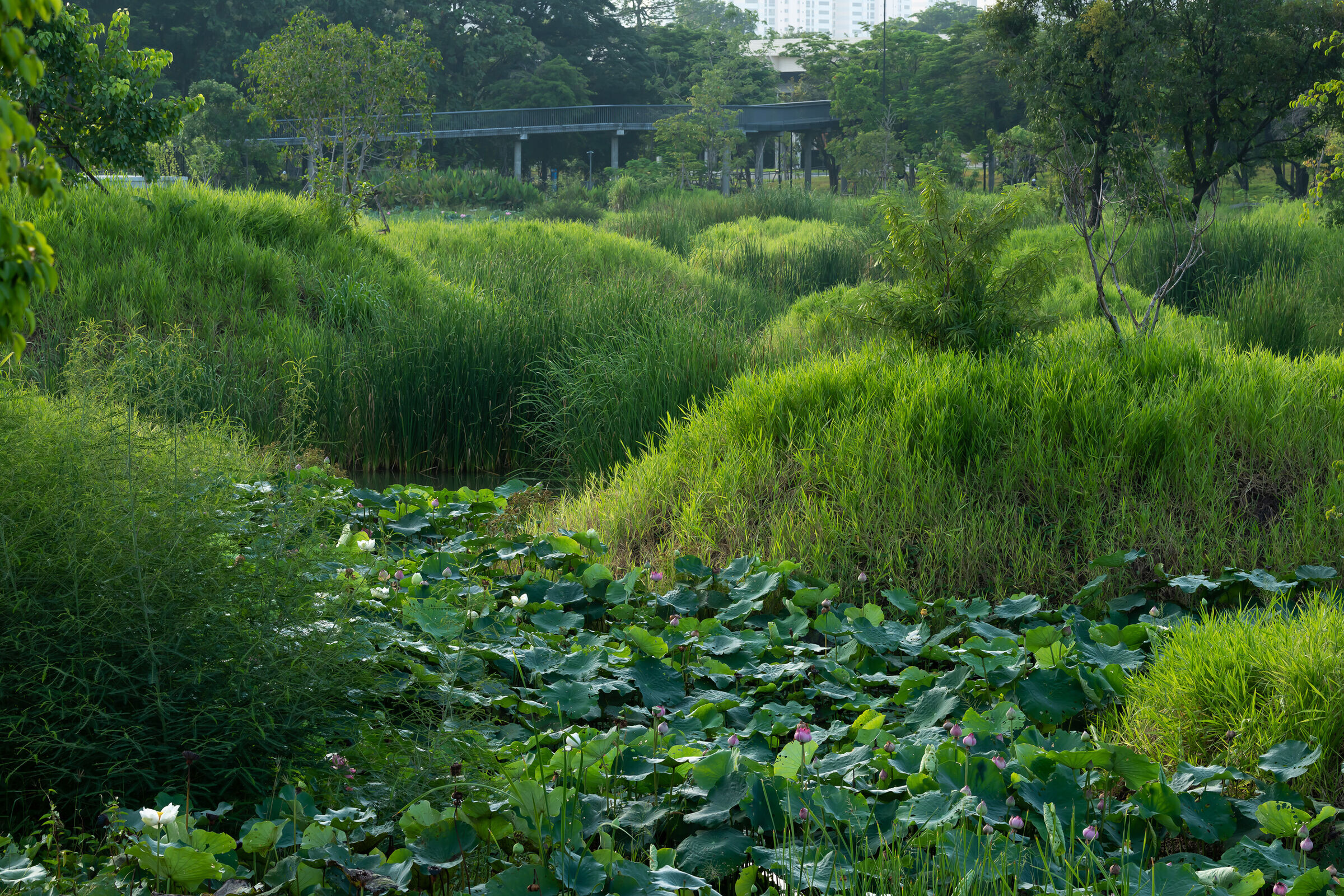
The design uses cut and fill earthwork techniques within the site to create landform character. Site material is reused, the stone and concrete from site demolition is used as the foundation of the berm island and water filtration layers. Reused existing concrete paving blocks used as bicycle parking pavement. The former tobacco factories are renovated into various facility buildings.
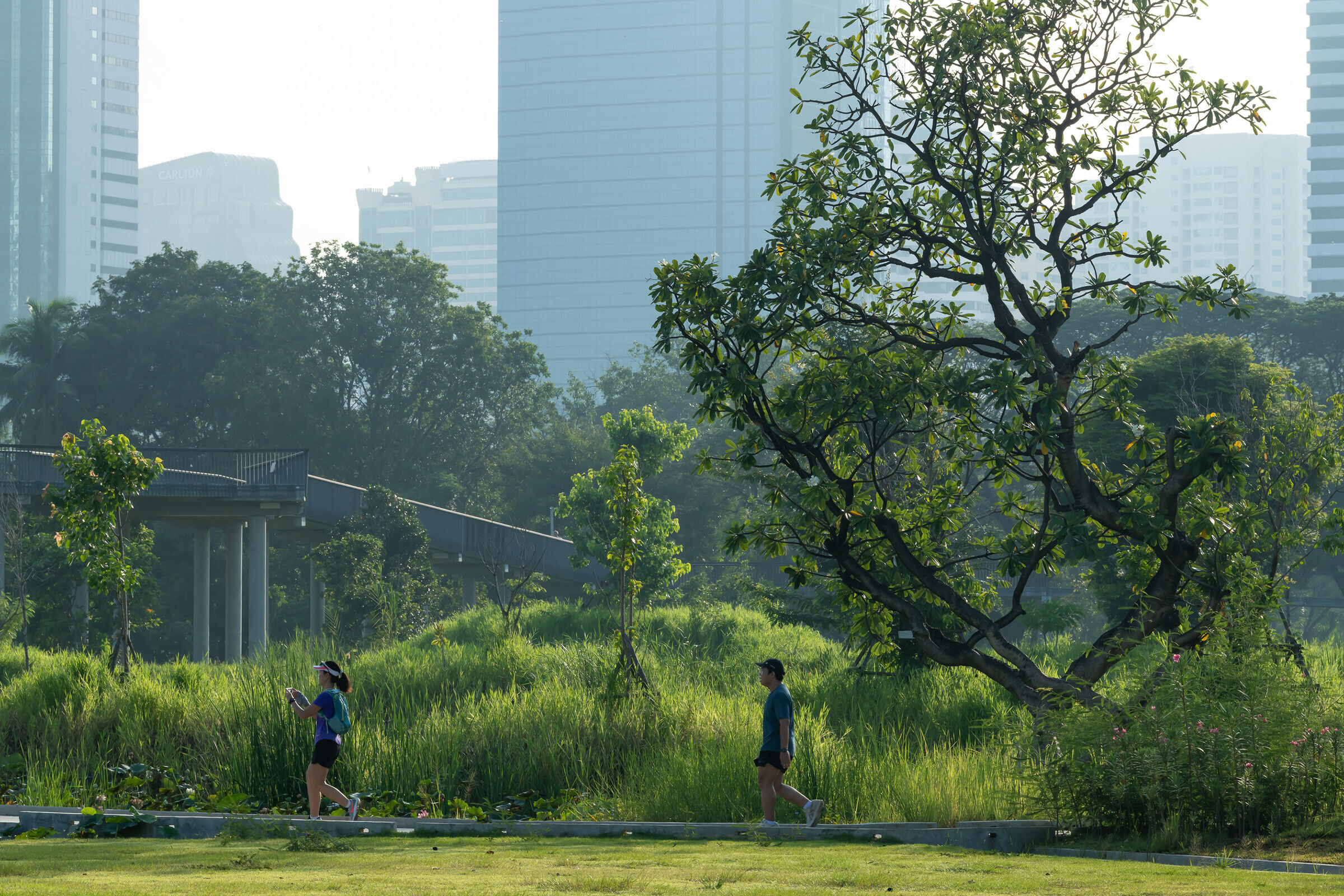
The park is accessible by all, from people around the surrounding community to people throughout Bangkok who want a space to immerse into the holistic ecosystem. Islands within the wetlands also serve as sanctuaries for other species to seek refuge. The area within the park is connected by a 1.67 km long skywalk, with universal design. The skywalk is a leisure and nature learning path. Variety of spaces, inclusive for all ages and groups are integrated such as bicycle ways, path under tree canopies, boardwalk, healing garden, sunshine lawn and a waterfront pavilion with an amphitheater. The renovated factory buildings will also become museums and sports centers with sun-roofs, high ceiling ventilation systems and trees for indoor air quality will make the buildings energy-efficient within limited budget.
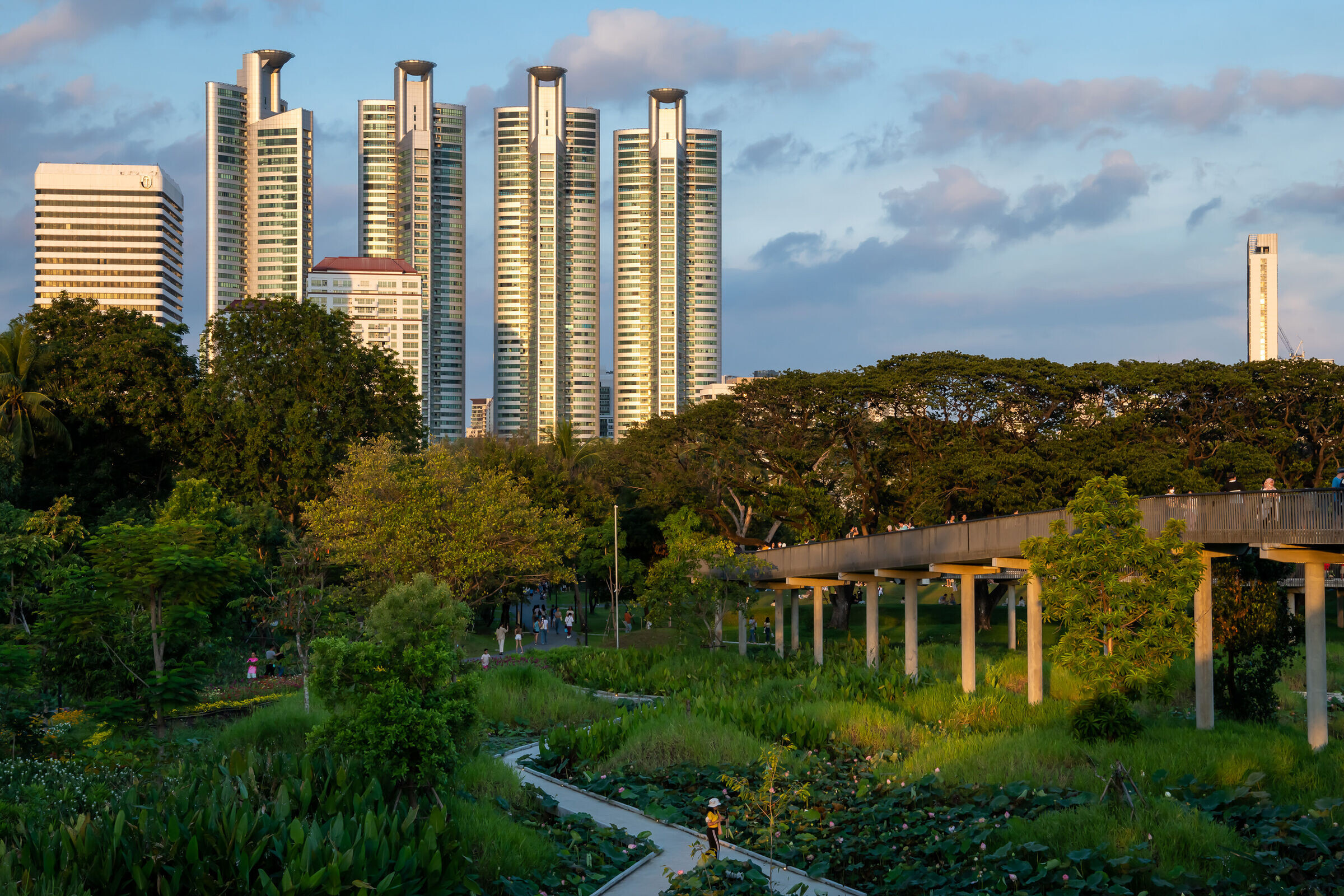
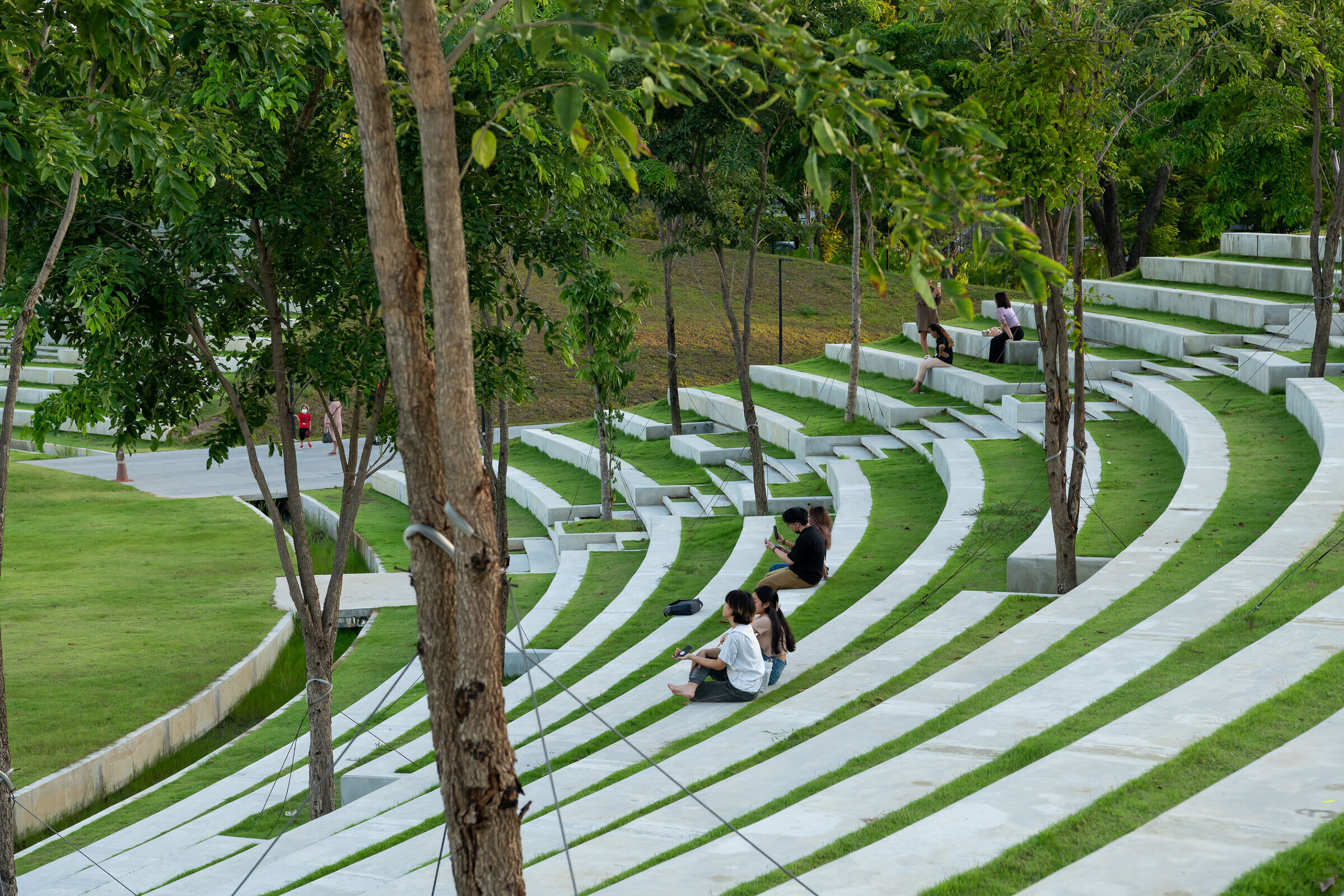
Creating a holistic ecosystem for the city, this forest park will become a biodiverse botanical classroom for Bangkokians.
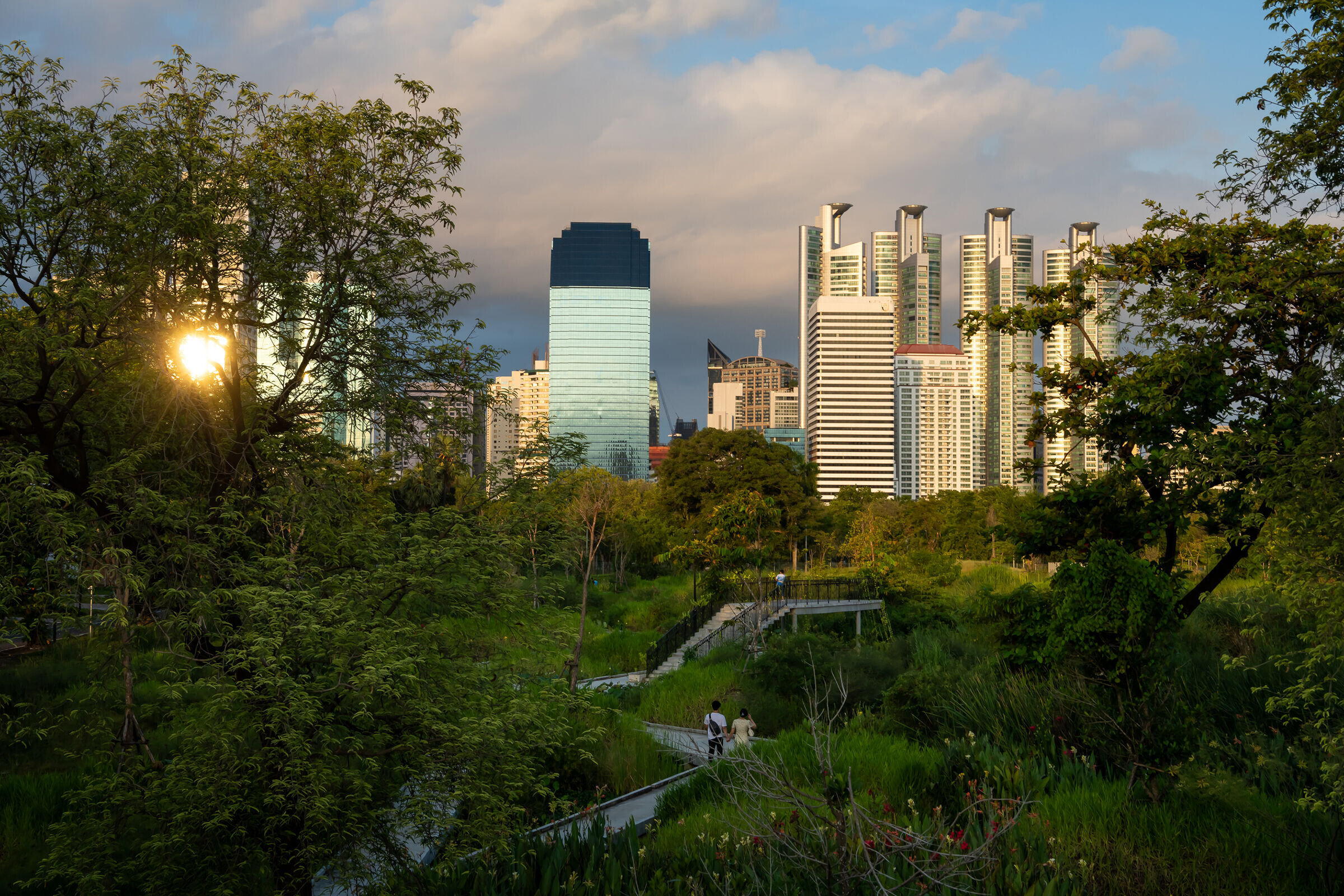
Team
Landscape Architect: Arsomsilp Community and Environmental Architect
Architect: Arsomsilp Community and Environmental Architect
Design Consultant: Turenscape, China
Structure Engineering: Kasem Design and Consultant Co., Ltd.
M&E Engineering: Optimology Co., Ltd
Construction Management: Stonehenge Co., Ltd
Contractor: Royal Thai Army – 1st Development Division
Signage Design: Plan Motif Co., Ltd
Universal Design : Center of Excellence in Universal Design, Faculty of Architecture, Chulalongkorn University
